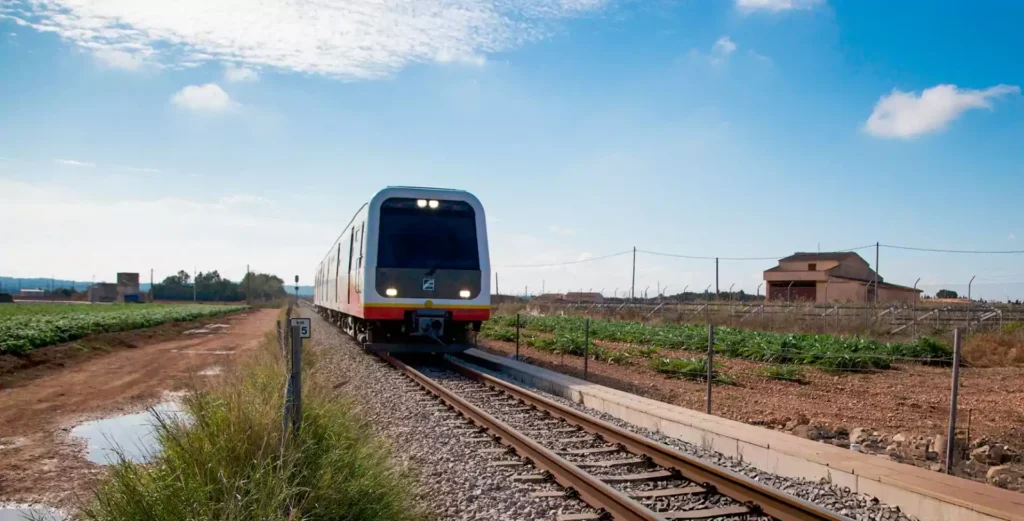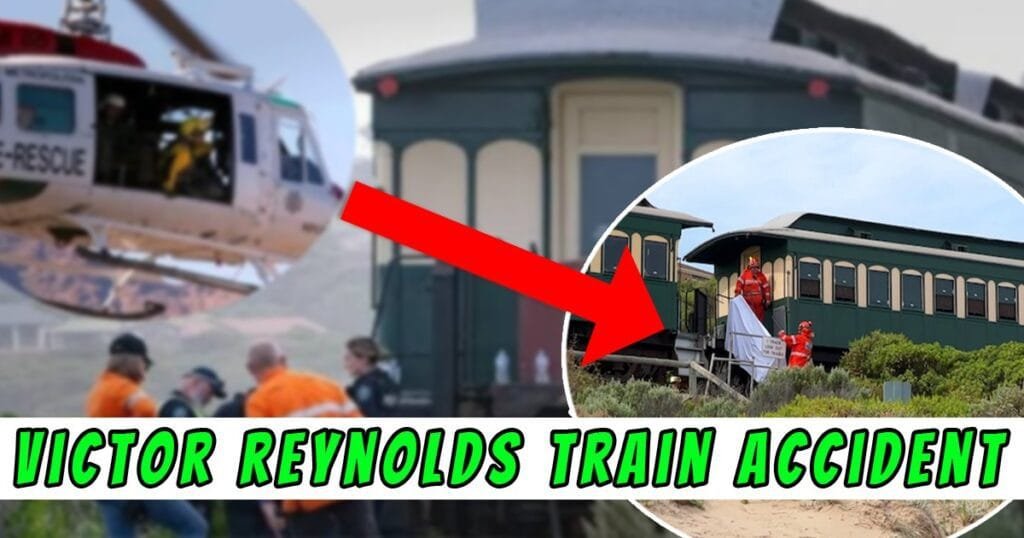The Unseen Ripple Effects Of The Victor Reynolds Train Derailment
The Victor Reynolds train derailment has become a global talking point, an event that transcends its immediate impact to reflect broader societal issues. It's not merely about the derailment itself but also about the larger implications it carries. As we delve into the details, we uncover layers of complexity that extend beyond the tracks where it occurred. The accident has ignited discussions on infrastructure safety, corporate accountability, and the human spirit's resilience. On July 15, 2023, near Springfield, Illinois, Victor Reynolds's life, and the lives of many others, changed forever.
This incident isn't just another headline. It serves as a stark reminder of the fragility of life and the necessity for stringent safety measures. The ripple effects are vast, influencing everything from public policy to individual perceptions about safety. Whether you're a rail enthusiast, a concerned citizen, or just a reader looking for a compelling narrative, the story of Victor Reynolds encapsulates a universal truth: the importance of vigilance and preparedness.
| Full Name | Victor Reynolds |
|---|---|
| Age | 45 years |
| Occupation | Freight Train Engineer |
| Place of Residence | Chicago, Illinois |
| Family | Married with two children |
| Career Highlights | Over 20 years of experience in the railway industry |
| Awards | Recipient of the Railway Safety Excellence Award in 2020 |
| Professional Affiliations | Member of the American Railway Association |
| Reference | National Transportation Safety Board |
Victor Reynolds is no ordinary engineer. With over two decades of experience, he's dedicated his life to the railway industry. His commitment to safety earned him the Railway Safety Excellence Award in 2020, a testament to his professionalism. On the fateful day, the train he was operating derailed due to a section of damaged track. Traveling at an estimated speed of 60 mph, the derailment caused extensive damage to the train and surrounding area. Thankfully, no fatalities were reported, but Victor suffered minor injuries.
Read also:Vegamovies 4u Revolutionizing The Streaming Experience
The National Transportation Safety Board (NTSB) report highlighted the subpar condition of the track, raising critical questions about maintenance protocols. This incident underscores the importance of regular inspections and timely repairs. It also brings to light the broader issue of aging infrastructure, a problem not unique to Illinois but affecting railways across the United States. The accident has sparked a conversation about the need for modernizing railway systems, investing in advanced technology, and enhancing personnel training.
Experts suggest that the root cause of the derailment lies in systemic failures. Preliminary findings indicate that the track hadn't been inspected for over six months, a lapse that should not have occurred. The railway company has since taken responsibility, acknowledging the incident as a wake-up call. They've pledged to implement changes aimed at ensuring the safety of passengers and personnel. This commitment is crucial, especially in light of the increasing reliance on railways for transportation and logistics.
The aftermath of the accident saw Victor receiving commendation for his quick thinking and calm demeanor. His ability to bring the train to a stop before it caused more damage likely saved lives. Dr. Emily Carter, a trauma specialist who treated Victor, praised his composure under extreme circumstances. Such qualities are rare and commendable, showcasing the resilience of individuals in high-pressure environments.
From this incident, several lessons emerge. Regular maintenance of railway infrastructure is non-negotiable. Emergency training for all railway personnel should be prioritized, and public awareness about railway safety is vital. The accident serves as a reminder that safety measures must be proactive rather than reactive. It also highlights the importance of accountability, where all stakeholders, from railway companies to maintenance crews, share responsibility for ensuring safety.
The investigation into the accident is ongoing, with the NTSB and local law enforcement working diligently to uncover the truth. Assigning blame isn't as straightforward as it seems. It involves multiple stakeholders, each with a role to play. Accountability is key, and without it, history risks repeating itself. The railway company's statement, taking full responsibility for safety, is promising but must translate into tangible actions.
Looking ahead, the conversation about railway safety is long overdue. It's not just about fixing the tracks but rethinking the entire system. Investment in modern infrastructure, AI-powered monitoring systems, and enhanced training programs are essential steps. The focus should shift from merely addressing issues after they arise to preventing them altogether. Victor Reynolds's accident has sparked a necessary dialogue about the future of railway safety.
Read also:Exploring The World Of Vegamovies In A Comprehensive Guide To Online Entertainment
As a society, we must advocate for better safety measures and hold authorities accountable. Concerned citizens can make a difference by staying informed and taking action. Organizations like the Railway Accident Victims Support Group, the National Transportation Safety Foundation, and the Victims of Railway Accidents Network offer avenues for support and involvement. Together, we can ensure that such incidents become rare exceptions rather than recurring events.
For Victor, the accident has been life-changing, both physically and emotionally. He's using this experience as a catalyst for change, advocating for safety measures that prevent others from enduring similar experiences. His resilience and determination are inspiring, highlighting the human spirit's capacity to overcome adversity and strive for improvement.
The media's role in shaping public perception cannot be overstated. While some outlets provide insightful analysis, others sensationalize stories for clicks. Responsible journalism is crucial, offering accurate, balanced, and insightful coverage that informs rather than misleads. It's imperative to stick to reputable sources, fact-check information, and critically evaluate what we consume.
Legal implications are also significant, with Victor and other affected parties exploring options for compensation. Legal proceedings are complex but necessary, ensuring accountability and justice for victims. This case underscores the importance of robust legal frameworks addressing railway accidents. As the legal process unfolds, more details will emerge, offering insights into preventing similar incidents.
Ultimately, this story transcends Victor Reynolds. It's about all of us—our collective responsibility to ensure safety, demand accountability, and make a difference. Accidents like these challenge us to do better, to demand more, and to advocate for change. By sharing this narrative, starting conversations, and taking action, we honor the lessons learned and contribute to a safer future. It's not just about Victor—it's about everyone who relies on railways for transportation and the broader societal implications they carry.


